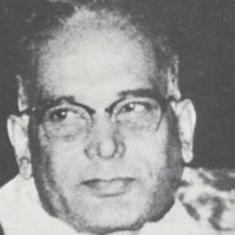As he announced the cancellation of the legal tender status for Rs 500 and 1,000 notes on November 8, Prime Minister Modi made it clear that black money was the prime target of the move.
This move, soon christened demonetisation, is probably the most drastic economic decision ever taken by an Indian government. Yet, even for so large a move, aimed ostensibly at black money, the Modi government didn’t even care to define what exactly black money is. After one month of demonetisation, with the government changing the aims and rules for the exercise almost daily, it seems that the government has no idea what black money even means. This makes any move to abolish it rather pointless.
All cash isn’t black money
As demonetisation progresses, the aim of the exercise is increasingly shifting to pushing digital transactions. This when the prime minister didn not even mention this goal one in his original November 8 broadcast. In its official communications, the government is now making the mistake of conflating cash and black money.
Here are two ads put out by the Modi government.
#IndiaDefeatsBlackMoney with the help of technology. #DigitalIndia #MeraDigitalIndia pic.twitter.com/vcDw7xKaSR
— Digital India (@_DigitalIndia) December 8, 2016
#IndiaDefeatsBlackMoney with the help of #technology - Part 2... #MeraDigitalIndia #DigitalIndia #Mustshare pic.twitter.com/Wi9x8e5F39
— Digital India (@_DigitalIndia) December 8, 2016
The aim of digitising the incomes of cobblers and auto rickshaw drivers is described with the hashtag #IndiaDefeatsBlackMoney. With small merchants and craftsmen rarely making it to India’s legal tax bracket of Rs 2.5 lakhs a year, it is inexplicable how these people using cash can be termed “black money”.
And all black money isn’t in cash
This isn’t all. The inverse mistake has also been made. It seems the Modi government has assumed that a significant portion of illegal wealth is stored in the form of banknotes. This is an assumption simply not backed up by data. In fact, if the people who thought up the idea of demonetisation had read the White Paper on Black Money published by the Union Ministry of Finance in 2012, they would have known that black money is expressly not stored in cash. Cash as a proportion of assets sized as part of income tax raids carried out by the Union government amounted to between 4%-7% from the years 2006 to 2012.
Yet, rather than act against real estate or other forms of storing actual illegal wealth, the Modi government targeted its smallest source: cash.
Because the very foundation of the demonetisation drive was wrong, its efforts to combat black money have been rather ineffective. The Union government expected large amounts of it not to
make it to the banking system post demonetisation. The assumption was that black money hoarders would rather throw away their cash than risk being caught. On Friday, however, the Modi government admitted in the Supreme Court that nothing of the sort has happened and deposits had already exceeded estimates the government was working with.
Given that the initial drive against black money has now almost failed, there is a frantic search to attribute other aims to the demonetisation exercise to justify the massive disruption caused in the economy and the lives of ordinary Indians, the primary one being turning India into a cashless economy.









